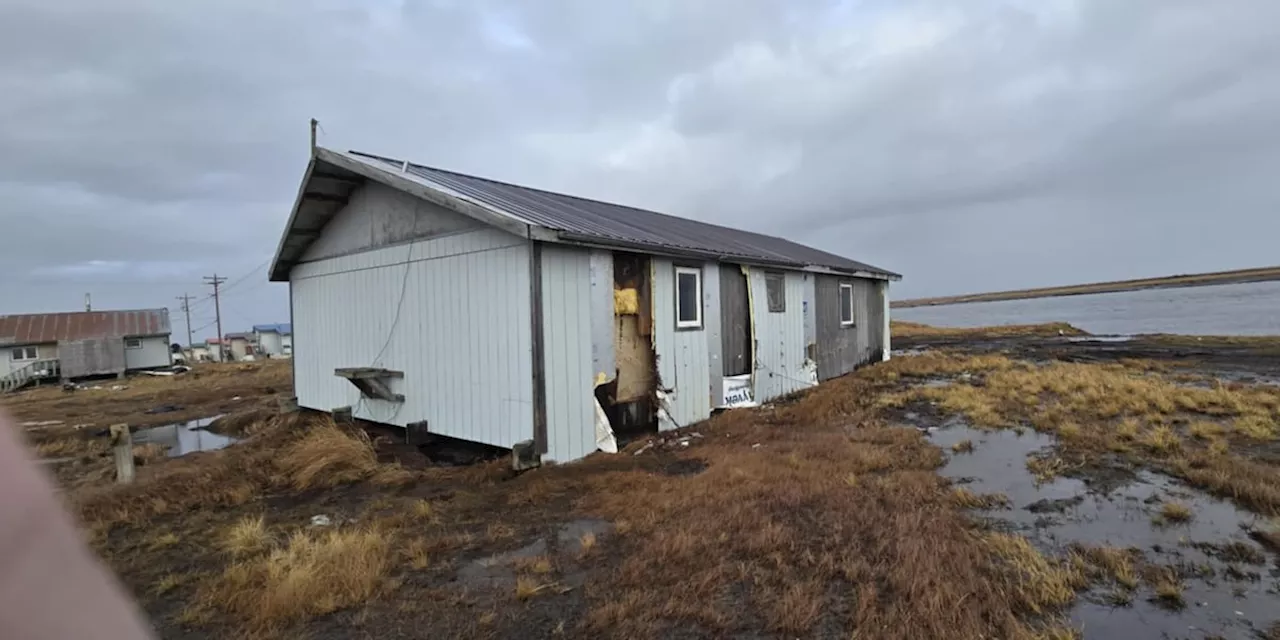UPDATE: In a race against time, more than 120 workers are urgently working to clean up significant oil spills in Kipnuk, Alaska, following the devastation caused by former Typhoon Halong. The U.S. Coast Guard is collaborating with multiple contractors to tackle the emergency created by overturned containers during severe storm surge flooding.
The cleanup efforts are crucial as communities prepare for the return of evacuated residents. Buddy Custard, CEO of Alaska Chadux Network, confirmed that the spilled substances primarily include home heating oil and gasoline, which are volatile and can dissipate quickly. “We are deploying teams to recover spilled oil and mitigate any potential spills,” Custard stated, underscoring the urgency of the situation.
Authorities report that the cleanup is complicated by Alaska’s winter weather, with temperatures dropping and limited daylight hampering operations. “We are losing about five to seven minutes of daylight each day,” said Shannon McCarthy from the Alaska Department of Transportation. The challenges are mounting as crews face icy conditions, making it imperative to act swiftly.
Cleanup crews in Kipnuk are not only focused on removing the spilled oil but also on preventing future incidents by establishing collection sites for hazardous materials. “Damaged containers are being emptied into safe containers, which are then transported to designated areas for winterization,” Custard explained.
IMPACT: This urgent cleanup operation is critical for the safety and well-being of the community as residents prepare to return home after being displaced by the storm. The collaborative response from the U.S. Coast Guard and local contractors is essential to mitigate further environmental damage and protect community health.
As residents anticipate their return, the situation remains fluid. Community members are encouraged to stay informed about the ongoing cleanup and any further developments regarding their homecoming. The response teams are committed to ensuring that conditions are safe for residents to return.
The weather conditions and the scale of the cleanup operation are raising concerns about the efficacy of the response. With temperatures continuing to drop, time is of the essence for crews on the ground. The community’s resilience will be tested as they navigate the aftermath of this natural disaster.
NEXT STEPS: Residents and local officials are urged to monitor updates from the U.S. Coast Guard and the Alaska Department of Transportation. Ongoing assessments will determine when it is safe for evacuees to return to Kipnuk and surrounding areas.
As the cleanup continues, the community rallies together, hoping for a swift resolution to this pressing environmental crisis.







